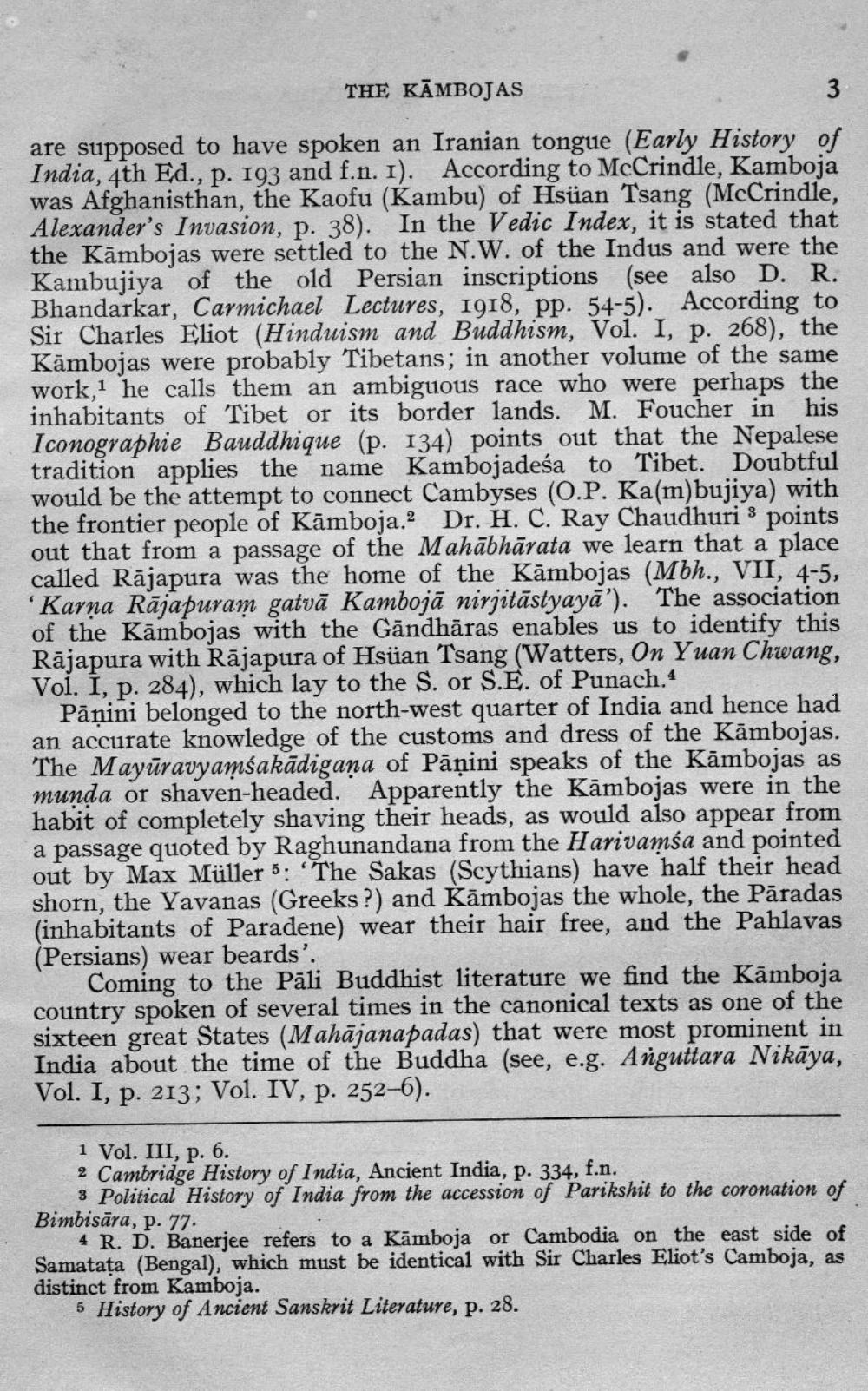________________
THE KĀMBOJAS
3
are supposed to have spoken an Iranian tongue (Early History of India, 4th Ed., p. 193 and f.n. I). According to McCrindle, Kamboja was Afghanisthan, the Kaofu (Kambu) of Hsüan Tsang (McCrindle, Alexander's Invasion, p. 38). In the Vedic Index, it is stated that the Kambojas were settled to the N.W. of the Indus and were the Kambujiya of the old Persian inscriptions (see also D. R. Bhandarkar, Carmichael Lectures, 1918, pp. 54-5). According to Sir Charles Eliot (Hinduism and Buddhism, Vol. I, p. 268), the Kāmbojas were probably Tibetans; in another volume of the same work, he calls them an ambiguous race who were perhaps the inhabitants of Tibet or its border lands. M. Foucher in his Iconographie Bauddhique (p. 134) points out that the Nepalese tradition applies the name Kambojadeśa to Tibet. Doubtful would be the attempt to connect Cambyses (O.P. Ka(m)bujiya) with the frontier people of Kāmboja.2 Dr. H. C. Ray Chaudhuri 3 points out that from a passage of the Mahābhārata we learn that a place called Rajapura was the home of the Kāmbojas (Mbh., VII, 4-5, Karna Rājapuram gatvā Kambojā nirjitāstyayā”). The association of the Kāmbojas with the Gāndhāras enables us to identify this Rājapura with Rājapura of Hsüan Tsang (Watters, On Yuan Chwang, Vol. I, p. 284), which lay to the S. or S.E. of Punach.4
Pāṇini belonged to the north-west quarter of India and hence had an accurate knowledge of the customs and dress of the Kāmbojas. The Mayūravyamśakādigana of Pāṇini speaks of the Kāmbojas as munda or shaven-headed. Apparently the Kāmbojas were in the habit of completely shaving their heads, as would also appear from a passage quoted by Raghunandana from the Harivamśa and pointed out by Max Müller 5: The Sakas (Scythians) have half their head shorn, the Yavanas (Greeks ?) and Kāmbojas the whole, the Pāradas (inhabitants of Paradene) wear their hair free, and the Pahlavas (Persians) wear beards'.
Coming to the Pāli Buddhist literature we find the Kāmboja country spoken of several times in the canonical texts as sixteen great States (Mahājanapadas) that were most prominent in India about the time of the Buddha (see, e.g. Anguttara Nikāya, Vol. I, p. 213; Vol. IV, p. 252-6).
1 Vol. III, p. 6. 2 Cambridge History of India, Ancient India, p. 334, f.n.
3 Political History of India from the accession of Parikshit to the coronation of Bimbisara, P. 77.
4 R. D. Banerjee refers to a Kāmboja or Cambodia on the east side of Samatata (Bengal), which must be identical with Sir Charles Eliot's Camboja, as distinct from Kamboja.
5 History of Ancient Sanskrit Literature, p. 28.




